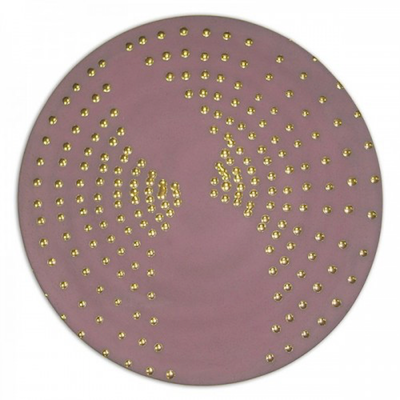
Details
Artist
Styles
Signed, numbered // Heinz Mack’s Terzett (against white) (2021) is a striking screen print that exemplifies the artist’s exploration of movement, texture, and light. The composition features a circular, radiating structure rendered in rich black tones against a stark white background. Layers of texture and shading give the work a sense of dynamic motion, as if the circular forms are oscillating or vibrating with energy. The interplay of light and shadow creates depth and intensity, reflecting Mack’s fascination with optical effects and kinetic art. Measuring 75 x 113.5 cm, this limited-edition print showcases Mack’s ability to merge simplicity and complexity into a visually captivating piece.
Terzett (against white), 2021
form
Medium
Size
75 x 113.5 cm
- Inches
- Centimeters
Edition
Price
- USD
- EUR
- GBP
Details
Artist
Styles
Signed, numbered // Heinz Mack’s Terzett (against white) (2021) is a striking screen print that exemplifies the artist’s exploration of movement, texture, and light. The composition features a circular, radiating structure rendered in rich black tones against a stark white background. Layers of texture and shading give the work a sense of dynamic motion, as if the circular forms are oscillating or vibrating with energy. The interplay of light and shadow creates depth and intensity, reflecting Mack’s fascination with optical effects and kinetic art. Measuring 75 x 113.5 cm, this limited-edition print showcases Mack’s ability to merge simplicity and complexity into a visually captivating piece.
- Recently Added
- Price (low-high )
- Price (high-low )
- Year (low-high )
- Year (high-low )
Heinz Mack
Silberflügel, Roter Fächer, 1973
Limited Edition Print
Screen-print
Currently Not Available
What is the Zero Movement?
ZERO was an art movement founded by Otto Piene and Heinz Mack, aiming to develop into a large international and cross-border movement. The name ZERO originated from a magazine founded by Heinz Mack in 1957, which became a platform for the group's ideas. The magazine was published for several years before ceasing in 1967. The ZERO movement sought to create a new beginning in art, emphasizing light, space, and movement, and became influential in post-war European art.


















